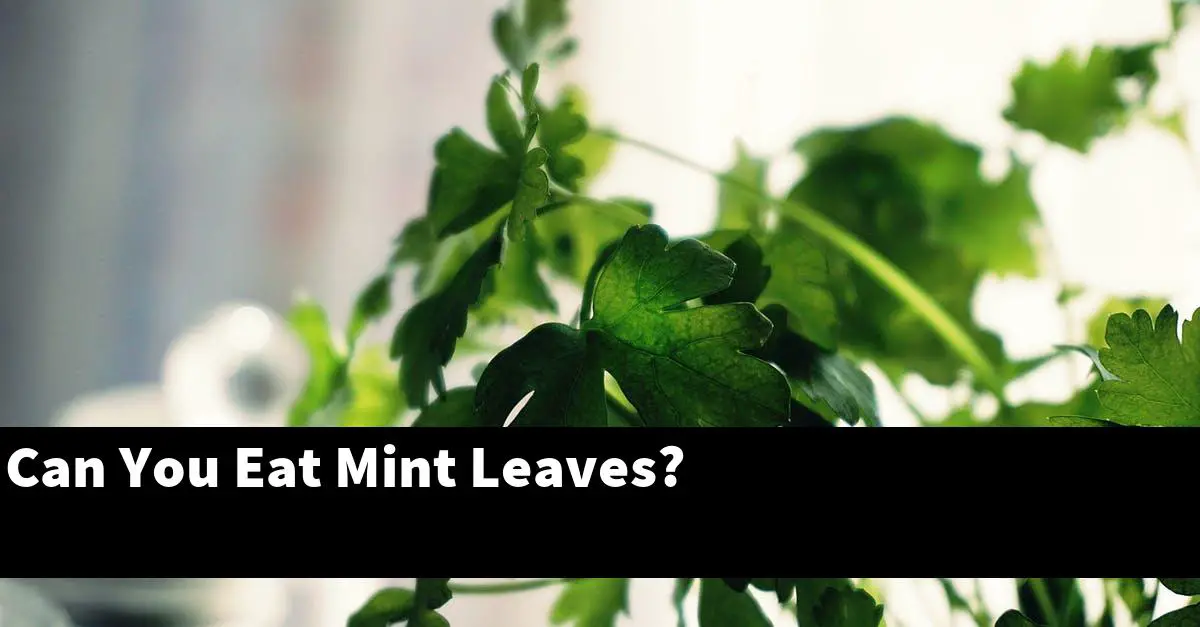Mint leaves are a type of herb that can be used in cooking or as a garnish. They have a refreshing, minty flavor that can enhance many dishes.
Mint leaves can be eaten raw, cooked, or dried.
How do you eat fresh mint leaves?
Mint leaves can be eaten fresh either as a leaf salad or as a mint tea. To enjoy fresh mint leaves as a leaf salad, first wash the leaves well and dry them.
Next, cut the leaves into thin strips and mix them with your desired dressing. Finally, enjoy! To enjoy mint tea, simply steep the leaves in hot water for a few minutes.
Is it ok to eat raw mint leaves?
There is no definitive answer as to whether or not it is safe to eat raw mint leaves, as there is no evidence to suggest that they are harmful in any way. However, it is generally recommended that pregnant women avoid eating raw mint, as there is a lack of evidence to suggest that it is safe for pregnant women to consume.
Additionally, people with allergies or sensitivities to mint should avoid eating raw mint leaves as they may be harmful to their health.
Can you eat mint leaves when pregnant?
There is not much known about the effects of consuming mint leaves when pregnant. However, there are some potential risks that should be considered.
One potential risk is that mint leaves may contain harmful compounds that could harm the unborn baby. For example, mint leaves may contain chemicals that could cause birth defects or other health problems.
Another potential risk is that mint leaves could interfere with the development of the baby’s brain and nervous system. Pregnant women should avoid consuming large amounts of mint leaves, as even small amounts could be harmful.
How many mint leaves can you eat in a day?
Mint leaves can be eaten as part of a meal, or as a snack. It is best to consume them fresh, but they can also be stored in a sealed container in the refrigerator for up to two days.
Are mint leaves bad for gerd?
Mint leaves are high in flavonoids, which might be bad for people with GERD, or GERD-related conditions. Flavonoids can increase stomach acidity and cause GERD symptoms.
Is it bad to eat too much mint?
There is no general consensus on whether it is bad to eat too much mint. Some people believe that consuming large amounts of mint can be detrimental to your health, while others maintain that mint can be beneficial to your health if consumed in moderation.
Ultimately, the health effects of consuming large amounts of mint depend on a number of factors, including your weight, activity level, and diet.
Are all mint leaves edible?
Yes, all mint leaves are edible. Some people may prefer the taste of spearmint leaves over peppermint, but both leaves are edible.
Is eating mint leaves good for you?
Mint leaves contain a high concentration of menthol, which is a natural cooling agent. Menthol has been shown to improve blood circulation and reduce inflammation.
Additionally, mint leaves are high in antioxidants, which can help protect cells against damage.
Are mint leaves good for you?
Mint leaves are a type of herb that is known for its ability to help improve digestion and relieve stomach cramps. Mint is also known to be a beneficial herb for overall health, and can be used to treat a variety of ailments.
Does chewing mint leave your breath fresh?
The mint plant produces oil that is thought to freshen breath. Chewing on a piece of fresh mint leaves may help reduce bad breath.
Are any mint leaves poisonous?
It depends on the specific mint variety and the dose. However, most mint leaves are not poisonous.
Some of the more poisonous mint varieties include spearmint (Mentha spicata), peppermint (Mentha piperita), and wintergreen (Gaultheria procumbens).
How to use mint leaves?
Mint leaves can be used as an herbal tea, for flavoring food, or for cleaning surfaces. They can also be used to make a refreshing drink.
In Summary
Mint leaves can be eaten fresh, dry, or cooked. They can be used to add flavor to food or made into a tea.
Mint leaves are high in antioxidants and have been used for centuries in traditional medicine.

